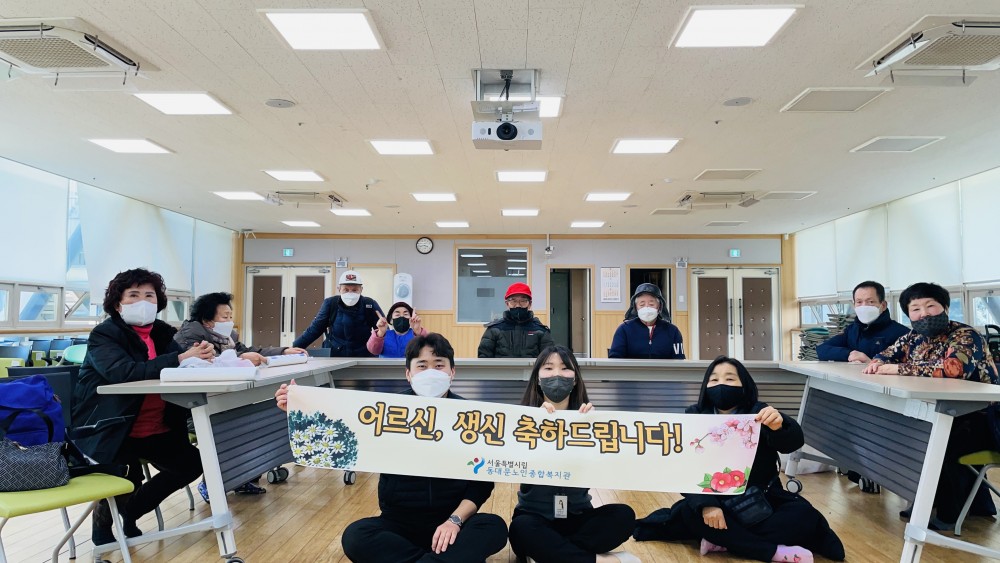To say Seoul is vibrant is an understatement. Every street is lined with cafes, restaurants, and bars each with their own aesthetic flair. Designer and streetwear brands in Apgujeong Rodeo and Hongdae have made these neighborhoods heaven for fashion lovers. People travel from around the world to take part in Seoul’s nightlife. All this makes Seoul appear like a paradise for young people wanting to make the most of their youth. However, Seoul’s population does not reflect this lively image. Rather, the face of the city is best characterized by its increasingly growing elderly population.
The Republic of Korea is one of many countries now facing an aging population crisis. As the birth rate drastically drops and healthcare technology develops, the ratio of the elderly population has reached a historic high. The Republic of Korea is currently facing one of the most severe demographic changes worldwide, with 16.5% of the population being over 65 as of 2021. This percentage is only expected to grow as Korea’s birth rate drops below one birth per woman. There are many problems associated with this change: generational conflicts, an overwhelmed healthcare system, decreased consumer spending, an insufficient workforce, and more.
The best long term solution to the aging population crisis is to raise the birth rate. However, in order to accomplish that goal, the government must reimage the childcare system, expand financial support for young people starting families, and change the general societal attitude towards motherhood and childrearing: not an easy task. Therefore, in the meantime, the Korean government has implemented various policies in order to address the ever growing elderly population. Many of these policies are targeted at helping elderly people comfortably participate in everyday life. Within Seoul’s subway, one can see many of these policies in action. Elevators and escalators, reserved seats for the elderly and disabled, and free subway usage are all targeted at increasing the general mobility of the elderly around the city. There are also policies directed at more broad issues associated with aging. Dongdaemun-Gu introduced various programs aimed at reducing the loneliness that elderly people often face while living alone. These programs include group socials, phone counseling, and long term visitations.

One of the programs provided by Dongdaemun-gu aimed at reducing the loneliness that elderly people often face while living alone.
Of course, there are far greater problems to which the government has had a harder time adapting. One of the biggest challenges for the elderly population is the increasingly digitization of society. Especially in the COVID-19 and post-pandemic era, society has had a major shift toward incorporating digital services in everyday life. The Vaccine Pass system utilized from late 2021 to early 2022 showed the severity of the digital gap. While younger patrons used Kakao or Naver to scan their vaccine passes, many elderly people, due to either a lack of digital fluency or a smartphone in general, could only show their paper registration cards. Kiosks, delivery platforms, online registration, and more are all new technologies that make the lives of young people easier but have the potential to alienate the elderly even more from society.

Kiosks at a Mc Donalds in Seoul
The digital divide relates to a larger trend associated with the elderly population in Korea: young people and old people are living completely different lives. While cities in Korea continue to expand, develop their culture industries, and embody the futuristic image for which Seoul has become known, elderly residents are facing issues of gentrification, rising prices, and general difficulties adapting to a changing society. In combination with the extremely high poverty rate of the elderly in the Republic of Korea, there is both an economic and social divide that is driving a wedge between the elderly and the rest of society. This divide, in combination with other issues related to the aging population crisis, has only worsened generational conflicts. In order to address the aging population crisis, not only is governmental action needed but also empathy and dialogue across generational lines. We will all eventually become the elderly person who people glare at because we walk too slow or have trouble using new technology. In order to create a society where all people can live without facing isolation and hate, we need to break the cycle of negativity that defines intergenerational relations.
Written by: Curtis Feldner
Originally from Atlanta, Georgia, USA. Currently a 4th Year undergraduate pursuing a BS in Educational Studies at University of Wisconsin-Madison. Exchange student at Korea University and intern at VANK (Voluntary Agency Network of Korea)